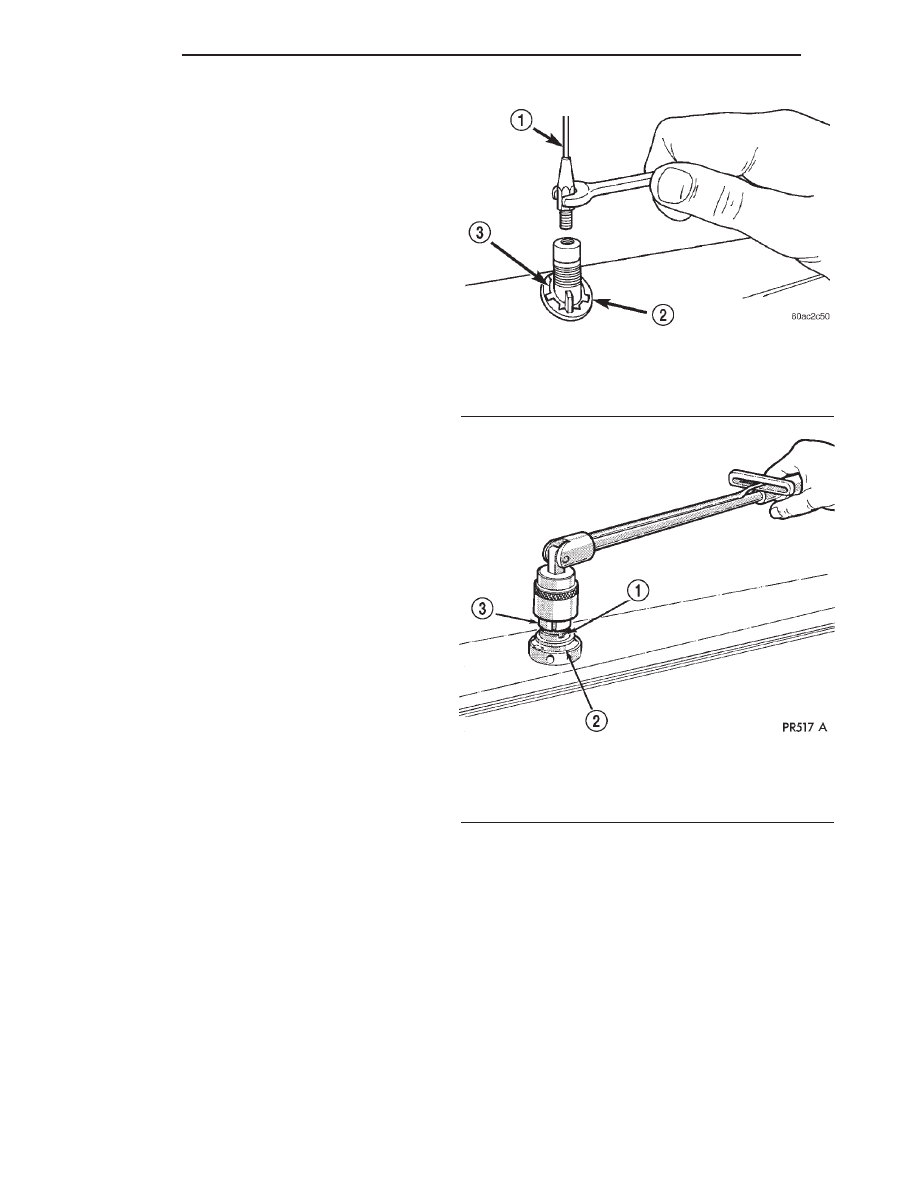Dodge Dakota (R1). Manual - part 282

TEST 3
Test 3 checks the condition of the vehicle body
ground connection. This test should be performed
with the battery positive cable removed from the bat-
tery. Disconnect both battery cables, the negative
cable first. Reconnect the battery negative cable and
perform the test as follows:
(1) Connect one ohmmeter test lead to the vehicle
fender. Connect the other test lead to the battery
negative terminal post.
(2) The resistance should be less than one ohm.
(3) If the resistance is more than one ohm, check
the braided ground strap(s) connected to the engine
and the vehicle body for being loose, corroded, or
damaged. Repair the ground strap connections, if
required.
TEST 4
Test 4 checks the condition of the ground between
the antenna base and the vehicle body as follows:
(1) Connect one ohmmeter test lead to the vehicle
fender. Connect the other test lead to the outer crimp
on the antenna coaxial cable connector.
(2) The resistance should be less then one ohm.
(3) If the resistance is more then one ohm, clean
and/or tighten the antenna base to fender mounting
hardware.
REMOVAL
ANTENNA BODY AND CABLE
(1) Disconnect and isolate the battery negative
cable.
(2) Remove the trim cover from the right cowl side
inner panel. (Refer to 23 - BODY/INTERIOR/COWL
TRIM COVER - REMOVAL.
(3) Reach under the instrument panel outboard of
the glove box to access and disconnect the antenna
coaxial cable connector. Disconnect the connector by
pulling it apart while twisting the metal connector
halves. Do not pull on the cable.
(4) Disengage the antenna coaxial cable retainers
at the right cowl side inner panel and inside the
right front fender.
(5) Unscrew the antenna mast from the antenna
body (Fig. 2).
(6) Remove the antenna cap nut using an antenna
nut wrench (Special Tool C-4816) (Fig. 3).
(7) Remove the antenna adapter from the top of
the fender.
(8) Lower the antenna body through the mounting
hole in the top of the fender.
(9) Pull the antenna body and cable out through
the opening between the right cowl side outer panel
and the fender through the front door opening (Fig.
4).
(10) Disengage the antenna coaxial cable grommet
from the hole in the right cowl side outer panel.
(11) Pull the antenna coaxial cable out of the pas-
senger compartment through the hole in the right
cowl side outer panel.
(12) Remove the antenna body and cable from the
vehicle.
Fig. 2 Antenna Mast
1 - ANTENNA MAST
2 - ADAPTER
3 - CAP NUT
Fig. 3 Antenna Cap Nut
1 - CAP NUT
2 - ANTENNA ADAPTER
3 - TOOL
8A - 6
AUDIO
AN
ANTENNA BODY & CABLE (Continued)